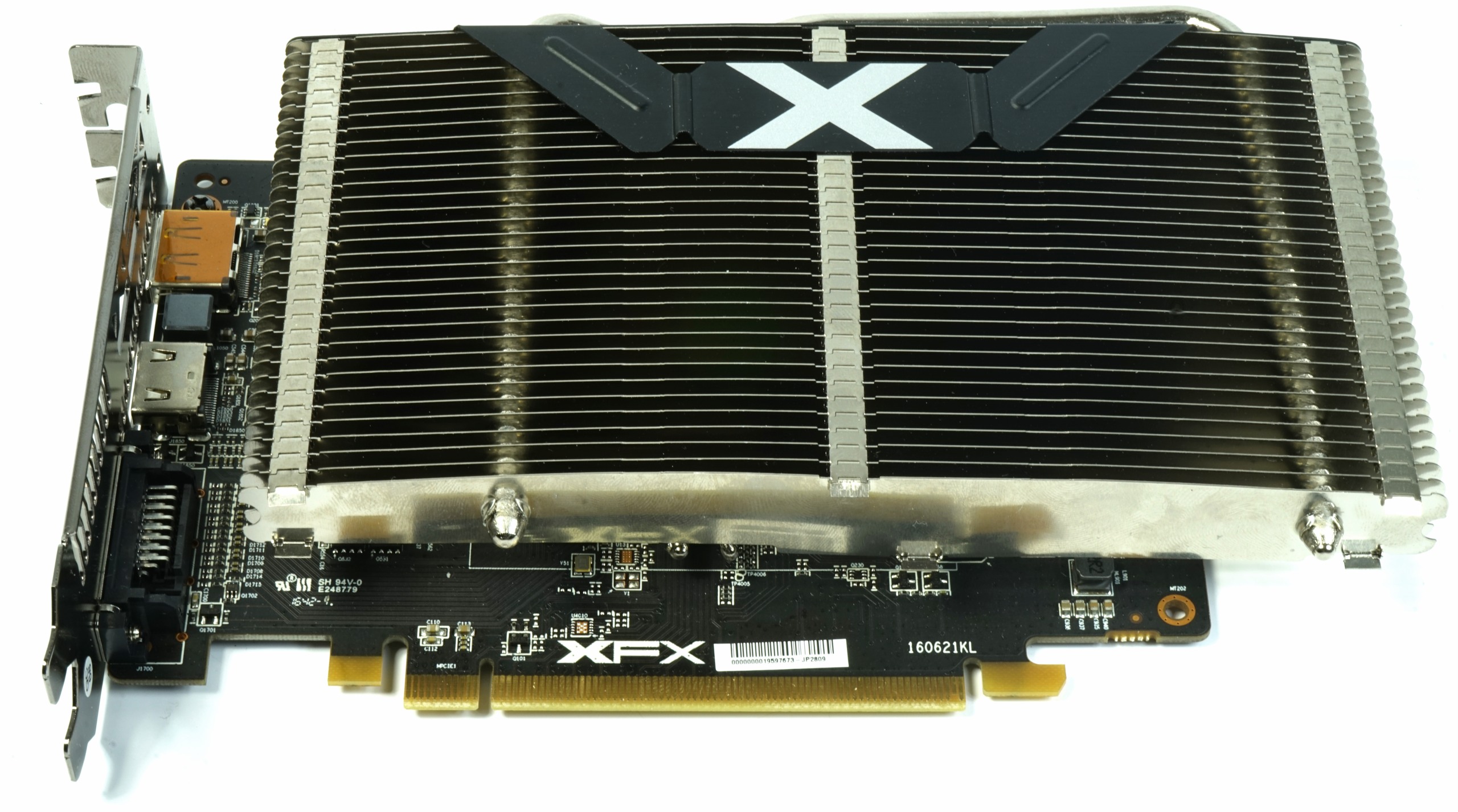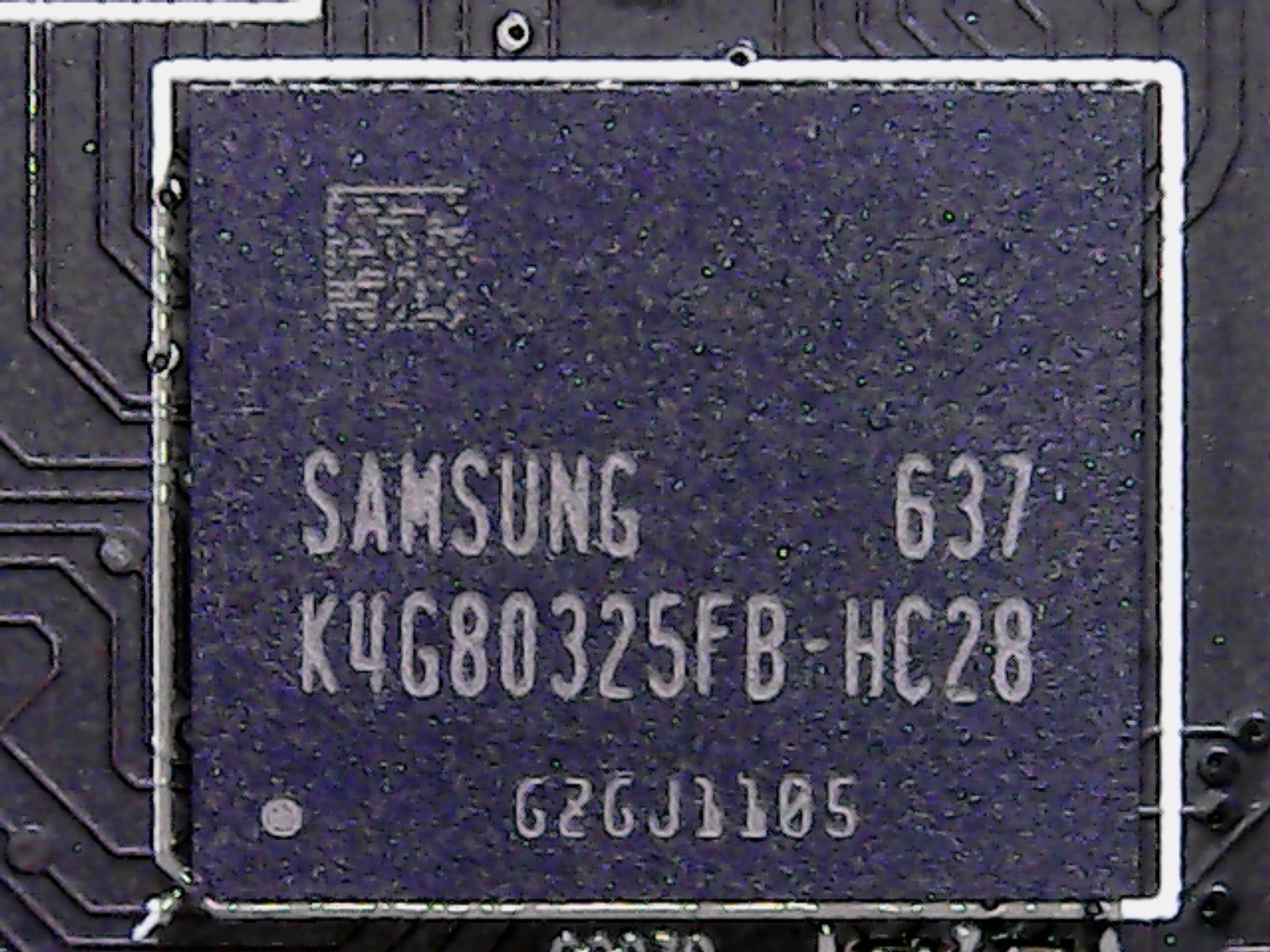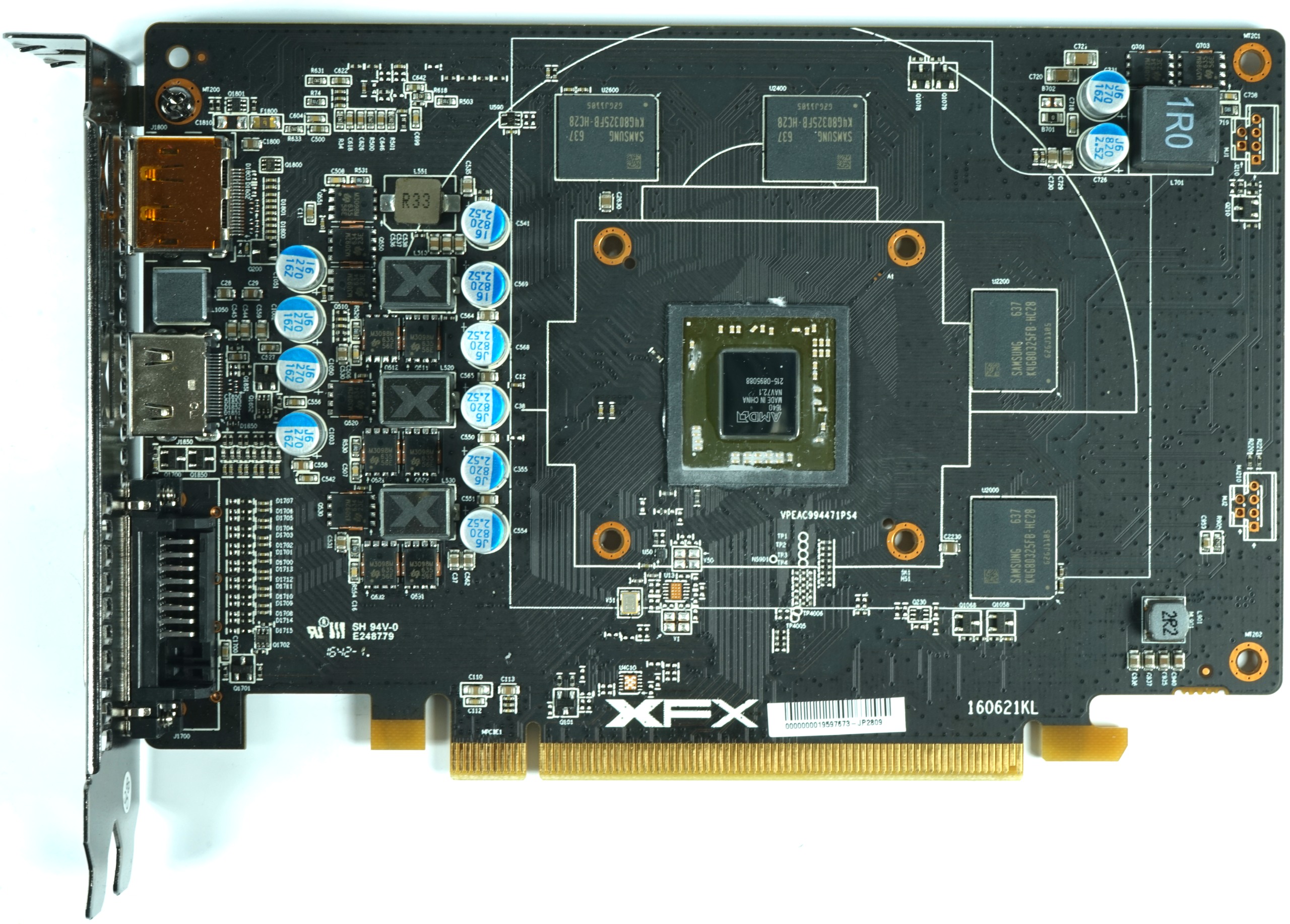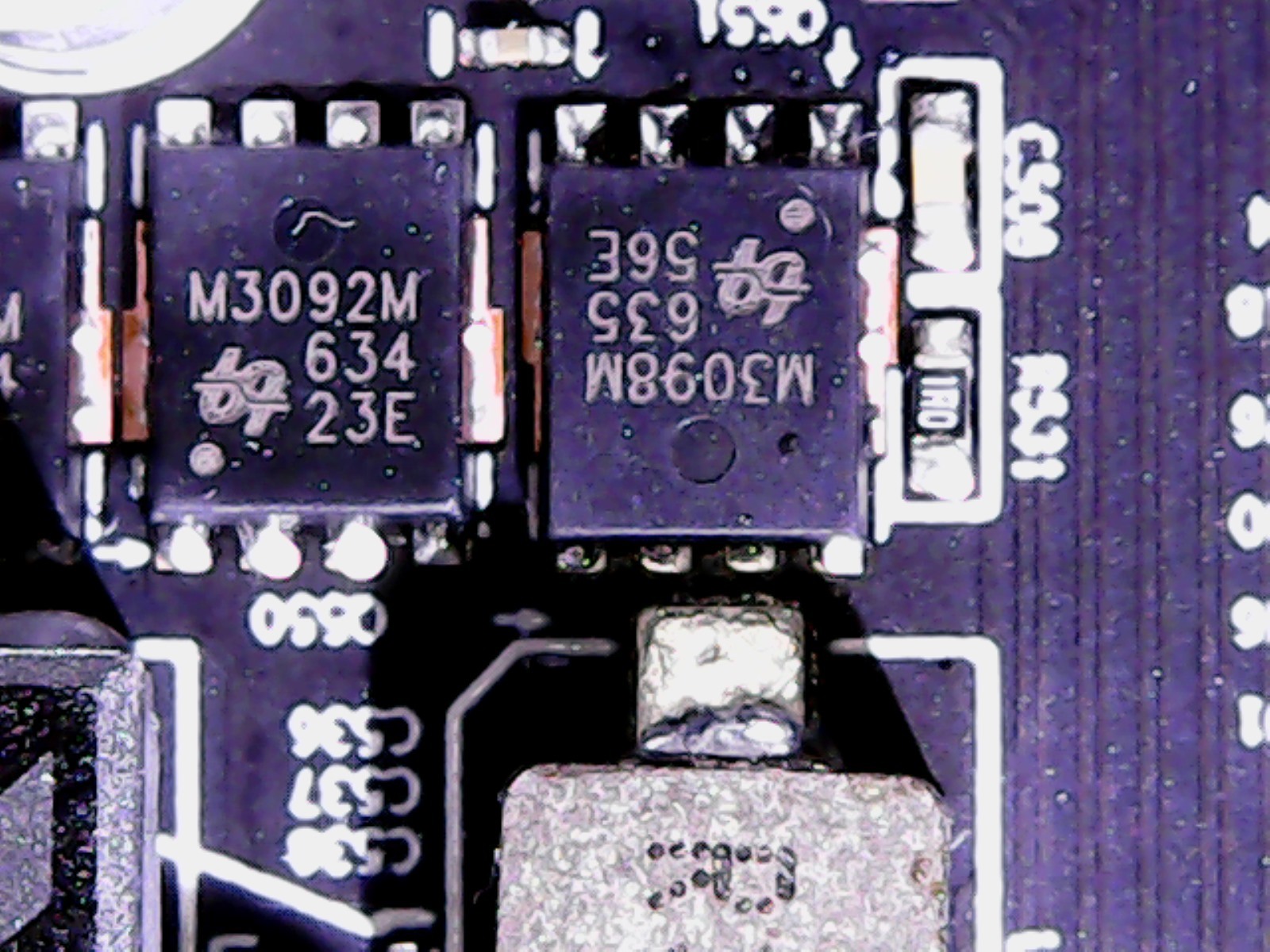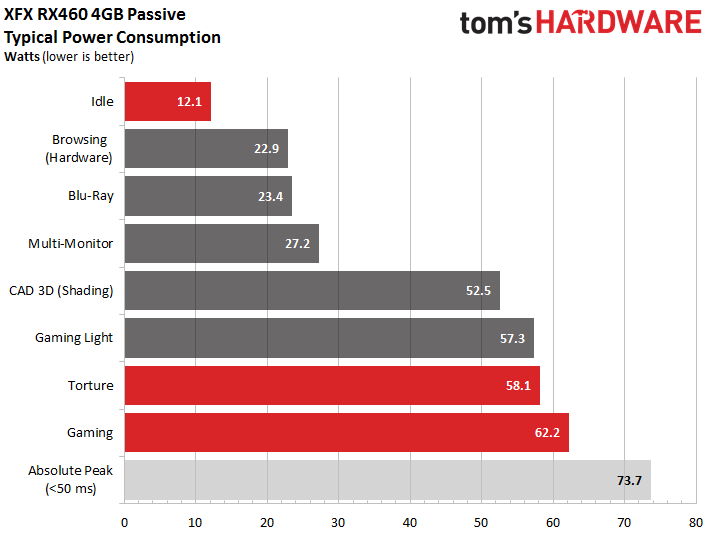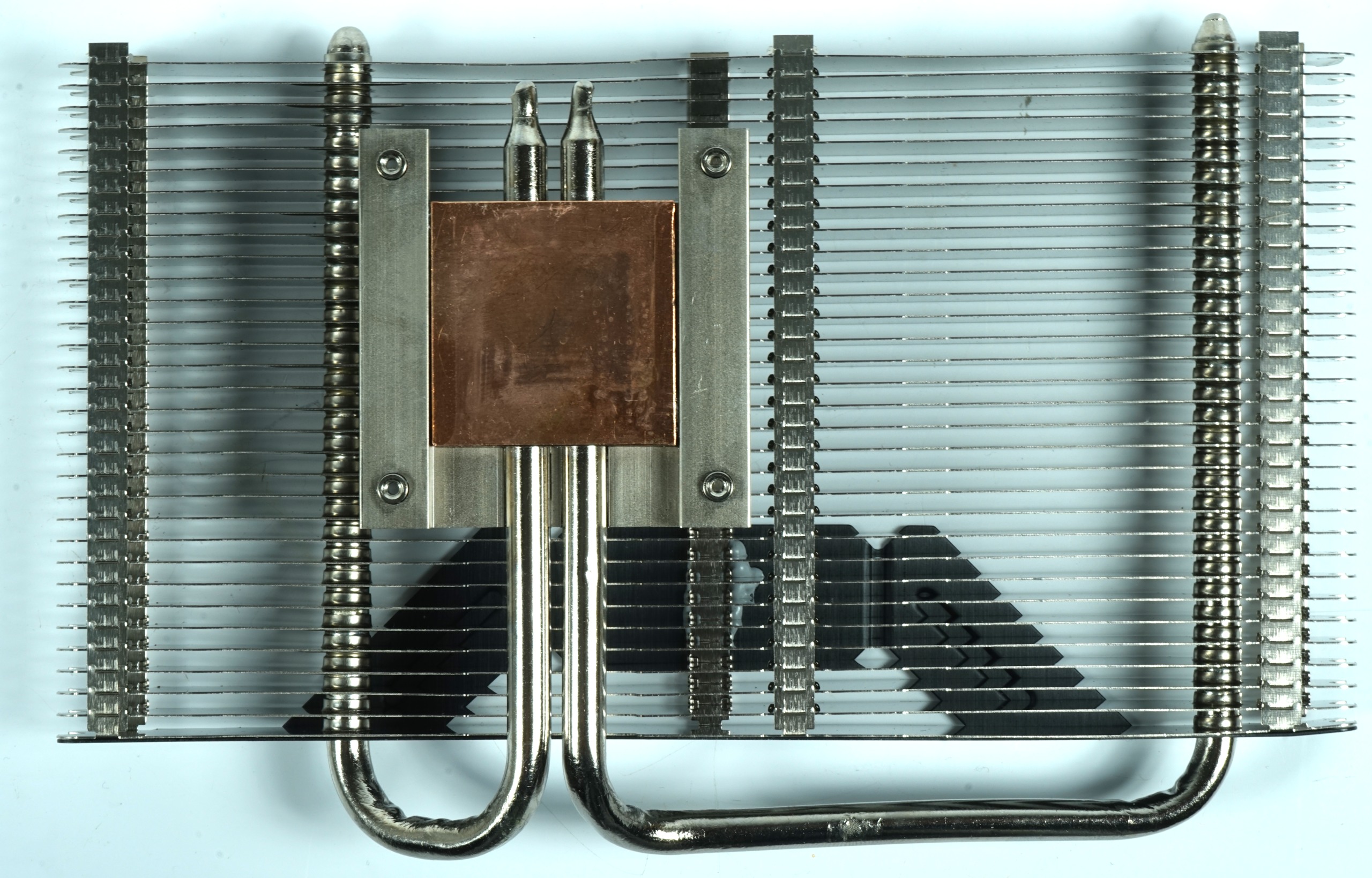Passive Cooling: XFX RX 460 Heatsink Edition Vs. Palit GTX 1050 Ti KalmX
After hacking together our own passively-cooled card, we now compare off-the-shelf solutions based on AMD and Nvidia GPUs. Was our attempt amateurish or could there be a more general problem with passively cooling current-gen graphics processors?
XFX Radeon RX 460 Heatsink Edition
XFX's Radeon RX 460 Heatsink Edition looks a lot like the older HIS Radeon HD 7750 iCooler card. That company, now under the XFX (Pine) umbrella, no longer offers passively-cooled AMD cards, but instead shifted to exotic single-slot solutions. The cooler size and fin arrangement we're testing today are clearly based on older HIS models, though.
MORE: Best Deals
MORE: Best PC Builds
Exterior
Our first impression of the Radeon RX 460 Heatsink Edition is that it's small and cute, weighing in at just 337g. The heat sink extends a bit beyond the PCB, resulting in an overall length of 20.2cm (from the display output bracket to the end of the cooler). Its 12.5cm height (motherboard slot to the top of the heat pipe) is workable in most cases, and 3.5cm width requires two slots.
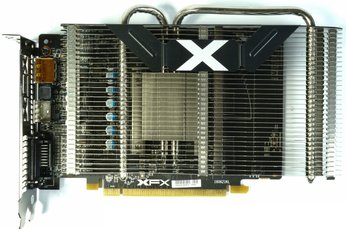
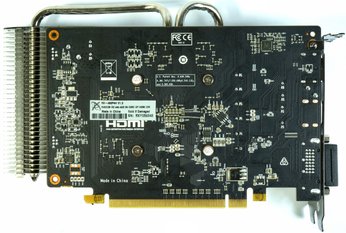
Flipping the card over, we can see its PCB measures just 16.5cm long. XFX fortunately dispenses with a backplate and wrap-around cooler, helping to avoid potential conflicts in compact mini-ITX cases.
Both nickel-plated heat pipes run from top to bottom. This adds 3cm to the card's height, but is necessary since the cooling fins are oriented horizontally.
The end of the card is completely open, which is appropriate for a passive solution. Up front, the output bracket sports a number of holes for air to escape, while exposing one DVI-D port, a DisplayPort 1.4-capable interface, and an HDMI 2.0 connector.
Get Tom's Hardware's best news and in-depth reviews, straight to your inbox.
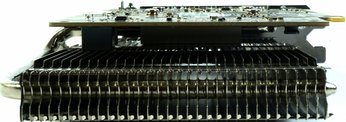
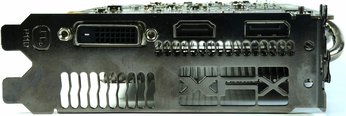
Circuit Board Layout And Power Supply
The voltage regulation circuitry is placed near the display output bracket, which makes perfect sense when you consider the card's power comes from a motherboard slot. The +12V pins are right there at the end.
XFX follows AMD’s requirements and uses Samsung K4G80325FB-HC28 memory modules, each with a capacity of 8Gb (32x256Mb). They reach a maximum of 1750 MHz at voltages between 1.305V and 1.597V. This card enjoys a thermal advantage compared to Radeon RX 470, which uses faster modules.
XFX gets creative with the Richtek RT8880C, a true dual-output PWM controller with three integrated drivers for the GPU's power phases. At the same time, it's able to control the memory's one phase. This saves space and simplifies layout significantly.
The high side of each GPU phase is equipped with one QM3092M6 N-channel MOSFET; the low side sports two QM3098M6 N-channel MOSFETs. Somewhat crudely-cast ferrite shells for the coils are adequate, but not what we'd call stellar. Since the GPU's maximum of 45W are divided up between these phases, the currents flowing through them shouldn't be an issue.
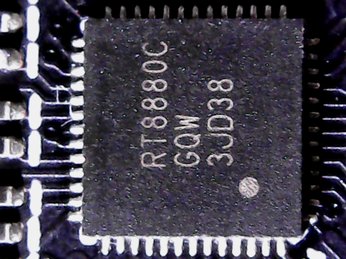
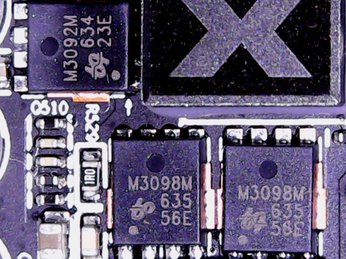
The memory uses one QM3098M6 N-channel MOSFET for the high and low sides, as well as a smaller Foxconn-style coil in the usual molded cup.
Power Consumption
This card's power consumption is manageable, which is a basic requirement for passive cooling. It hits a searing 62W in our gaming loop, and drops to 58W in our stress test. Given the cooling available to it, we simply cannot expect much more.
Our peak measurement represents a brief moment in time; it can't be used to characterize the board's power consumption over longer periods.
The following graphs show two-minute runs in our gaming loop and stress test; they provide the basis for calculating average power consumption.
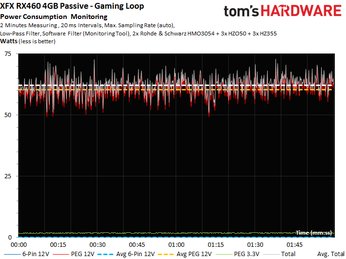
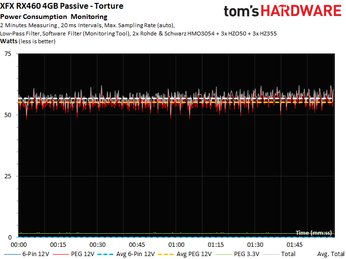
Now we get to look at our current measurements, which fall below the PCI-SIG's 5.5A limit for the 12V motherboard slot.
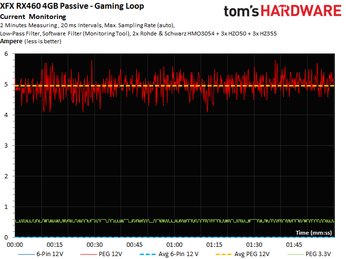
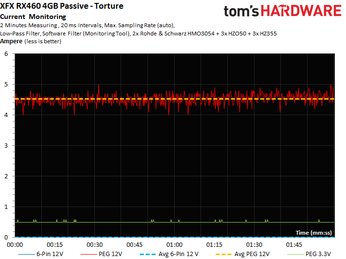
Cooler Assembly
XFX's cooler is easily removed by loosening four screws surrounding the GPU package. Two 6mm nickel-plated copper alloy heat pipes are sandwiched between a small, yet beefy, copper sink and an aluminum block above it. The aluminum block supports the actual cooler assembly, while the pipes dissipate waste heat through the fin array.
MORE: Best Graphics Cards
MORE: Desktop GPU Performance Hierarchy Table
MORE: All Graphics Content
Current page: XFX Radeon RX 460 Heatsink Edition
Prev Page Passive Cooling Shootout: Which One Is Better? Next Page Palit GeForce GTX 1050 Ti KalmX
Igor Wallossek wrote a wide variety of hardware articles for Tom's Hardware, with a strong focus on technical analysis and in-depth reviews. His contributions have spanned a broad spectrum of PC components, including GPUs, CPUs, workstations, and PC builds. His insightful articles provide readers with detailed knowledge to make informed decisions in the ever-evolving tech landscape
-
derekullo Watch Dogs 2Reply
1920 x 1080 Pixels
"High Settings"
FPS (Lower is better)
Made me Laugh. -
Rookie_MIB Wow. You know, they could fit a small incredibly slow fan in there somewhere that would generate zero noise and improve their results dramatically. I guess you could use the XFX in a server as the airflow scenario would allow cooling from the fans, but why would you use a GPU in a server anyhow?Reply -
Math Geek i can't think of a single scenario where this is needed. fanless gpu but you need multiple case fans to keep it cool and barely at that. why not just have the fans right on the card? double slot so you don't save any space that way, so those few cases that truly need a single slot card can't even be claimed as a market for this card.Reply
now that single slot slim fan design His showed off a while ago would be an awesome thing if it worked and was actually released.
but i just don't see this filling any need at all in a gaming pc. in a non-gaming pc a regular gpu would likely stay cool enough for the passive mode to keep the fans totally off or barely moving. yet still be able to kick it up when needed for a bit of funtime distraction. -
Pompompaihn Dumb products. If have to run system fans for them to work than what's the point of a completely fanless product? It's like saying my car gets infinite gas mileage as long as it's hooked to a tow truck...Reply -
RomeoReject Only situation where I can see them being worthwhile is in a mineral oil setup. The fan on the GPU I have in mine baaaaarely moves as is. More oil moves as a result of convection. So in that situation, it could be worth having the extra metal on there and relying on the convection effect rather than wasting that space on a fan.Reply
But that is so incredibly niche, I agree with you all: These are products searching for a purpose. -
80-watt Hamster Reply19487062 said:now that single slot slim fan design His showed off a while ago would be an awesome thing if it worked and was actually released.
Are you talking about something like this?
-
Math Geek Reply19488039 said:19487062 said:now that single slot slim fan design His showed off a while ago would be an awesome thing if it worked and was actually released.
Are you talking about something like this?
not the exact one but that's the idea. i did not know XFX had finally released it, must have missed that announcement. This article also pointed out that XFX bought HiS which i did not know. so i expect that this is the design HiS teased a while ago with XFX colors on it. this was the one they teased a while ago that seems to also have been relased http://www.hisdigital.com/gb/product2-940.shtml -
FormatC XFX bought nobody. XFX is a brand from the mother company Pine and Pine bought HIS as brand, not as single company. So are both vendors at the end only a brand from Pine and must share a lot of ressources and production lines. I saw, that they are using similar PCB layouts, only the cooling and design is a little bit different.Reply
XFX seems a real poor company. I got the card a few days for the review but I had to send it back on my own costs (because they had no more samples to rotate and no money for carriers). So it is impossible to answer on questions that requires a re-test or second look at the product. -
RomeoReject Reply
Surprised XFX has fallen so far.19491648 said:XFX bought nobody. XFX is a brand from the mother company Pine and Pine bought HIS as brand, not as single company. So are both vendors at the end only a brand from Pine and must share a lot of ressources and production lines. I saw, that they are using similar PCB layouts, only the cooling and design is a little bit different.
XFX seems a real poor company. I got the card a few days for the review but I had to send it back on my own costs (because they had no more samples to rotate and no money for carriers). So it is impossible to answer on questions that requires a re-test or second look at the product.
I know with both of my XFX R9 280X cards I had from them, they're both in great condition, and currently overclocked a wee bit (It's cold where I live). XFX also says that they'll maintain warranty despite overclocks (Below a certain power threshold) which is why I picked them in the first place.
Sad that they seem to be more dirt-baggish these days.
